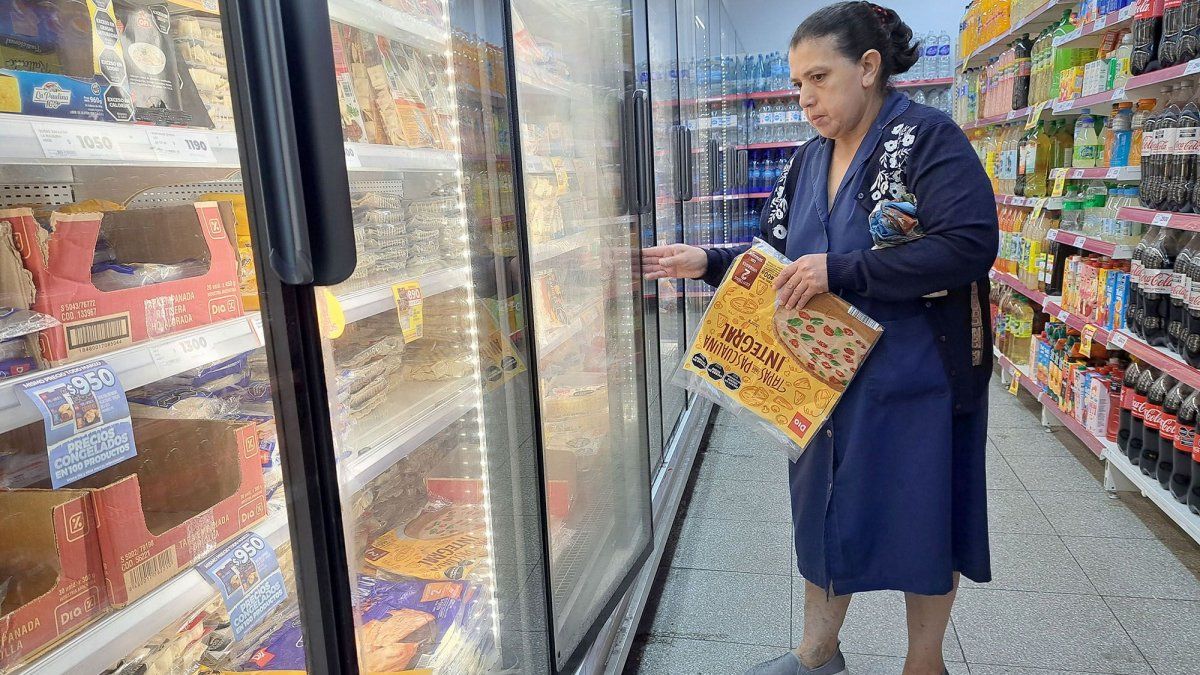While the Ministry of Economy continues to work on the regulations that seek to facilitate the food import ready for consumption in supermarkets, Some data anticipate that the disinflation process will continue in March.
In the case of food inflation, according to the LCG consultancy. the accumulated increase in two first weeks of the month was 6.9%. That data is 0.6 points lower than the same period in February, when it was 7.6; and one and a half points lower than in January, when it rose to 8.4%.
For example, taking data from the consulting firm itself, In January the four-week average inflation was 32.2%, while in March it is 11.6%. This is a 20-point drop in the speed at which food prices travel at the beginning of the year.
lcg-prices-2dasemana.png
According to the private report, the speed of prices “decelerated 0.3 percentage points compared to the previous week” while “the increase averages 11.6% in the last 4 weeks and 11.2% end to end in the same period.”
“After the fall of the previous week, the increase in Beverages explained 38% of weekly inflationly was partially offset by the decline in Sugar and Fruits (-0.22 points),” LCG highlighted.
The drinks rose 8.77% average, while “ready-to-go meals” followed with 5.69% and baked goods with 4.35%. On the other hand the item that includes sugar, honey and cocoa fell 5.19%, while fruit 1.87%.
On the other hand, the report indicates that “the percentage of products with weekly increases seems to be stabilized at around 32%, implying an adjustment of the total basket every 3.2 weeks.”
The March CPI could be at 12%
Eugenio Mari, chief economist of the Libertad y Progreso Foundation, told Ambito.com that inflation, in the monitoring carried out by that entity, “for now with a second week It is close to the February level, and even below”.
Marí estimated that the inflation of March could return to around 12% to 13% because this month there are no regulated price increases as occurred in February, with the increase in bus and train fares.
“If the data is similar it would be very positive because March seasonally has higher inflation than February. Including the seasonal trend, food is rising by 10%,” the economist anticipated.
The Libertad y Progreso analyst warned, however, that the defeat suffered by the government in Congress with the treatment of DNU 70, which was rejected by the Senate, may have an impact on the index of the last weeks of the months.
And he considers that the fiscal program still of the government “is in limbo” because it requires measures that necessarily have to go through Congress, such as the package that includes the restitution of the Income Tax, the moratorium and labor and money laundering.
Provinces with less inflation than the Nation
Seven of the ten subnational districts that usually keep inflation records showed percentages lower than 13.2% in February. which was announced on Tuesday by the National Institute of Statistics and Censuses (INDEC) for the entire country,
In the interannual measurement, a reverse situation occurred, since there were eight that had rates higher than the 276.2% that the national statistical agency published.
According to the survey of the consulting firm Politikon Chacobased on official information from the provinces and the City of Buenos Aires, only three districts registered increases in the CPI higher than those surveyed and were CABA (14.1%), Neuquén (13.7%) and Córdoba (13.4%).
On the contrary, in Jujuy there was the slightest increase of the month (10.5%), in a list completed by Chaco (10.6%), Tucumán (10.8%), Río Negro (12%), Mendoza (12.2%), Santa Fe (12.3%) and San Luis (13% ).
Source: Ambito




